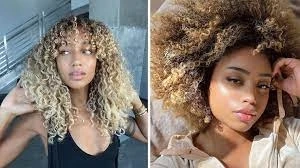Does Minoxidil Change Hair Texture? Unveiling the Myths and Truths
The quest for thicker, fuller hair often leads us down winding paths of wonder and skepticism. One name that crops up consistently in this journey is Minoxidil, a potent hair growth stimulant. While its effectiveness in promoting hair regrowth is widely acknowledged, questions around its side effects remain, with hair texture alterations being a prominent concern.
So, does Minoxidil change hair texture? The answer, as with most things in the world of hair science, is nuanced and requires a deeper dive.
Understanding Minoxidil and its Impact on Hair Growth:
Minoxidil works by opening up potassium channels in hair follicles, stimulating blood flow and nutrient delivery. This increased circulation triggers the follicles to enter the anagen (growth) phase, leading to thicker, longer hair strands. However, its mechanism of action also has the potential to alter certain aspects of hair texture, depending on individual factors.
The Spectrum of Texture Changes:
Thicker, Stronger Hair:
For some, Minoxidil might be the hero their hair dreams longed for. It can trigger the growth of thicker, stronger hair strands, which can feel coarser and fuller compared to pre-treatment hair. This welcome change is often perceived as an improvement in texture, especially for those with naturally fine or thin hair.
Increased Curl or Wave:
The stimulation of hair follicles can sometimes activate dormant curl patterns or enhance existing waves. This might initially feel like a change in texture, but it's actually the emergence of your hair's inherent characteristics that were previously suppressed due to follicle miniaturization.
Dryness and Brittleness:
Minoxidil's vasodilatory properties can also lead to scalp dryness, impacting the natural oil production and moisture levels in hair. This can result in rougher, drier, and more brittle hair strands, particularly noticeable in individuals with naturally dry or damaged hair.
Unwanted Fuzziness:
In rare cases, Minoxidil can trigger the growth of vellus hair, those fine, short hairs covering most of our body. This can manifest as unwanted facial hair or increased hairiness on other body parts, adding a perceived change in texture to these areas.
Individual Variances and the Role of Genetics:
It's crucial to remember that everyone's hair responds differently to Minoxidil. Genetics play a significant role in determining how your hair follicles react to the medication, influencing the degree and type of texture change you might experience. Additionally, factors like your underlying hair condition, overall scalp health, and concurrent usage of other hair products can also contribute to the individual variability in texture outcomes.
Managing Texture Changes with Minoxidil:
If you're concerned about potential texture changes, here are some tips:
Consult a dermatologist: A professional can assess your hair type, scalp health, and hair loss pattern to tailor the Minoxidil treatment and predict potential side effects, including texture changes.Start with a lower dose: Begin with the lower strength (2%) Minoxidil solution to minimize the risk of adverse effects, including texture alterations.Focus on scalp health: Maintain a healthy scalp by using gentle shampoos, conditioners, and scalp moisturizers to combat dryness and brittleness.Consider alternative formulations: Explore foam or spray options if the liquid solution seems to exacerbate dryness or cause irritation.Hydration is key: Deep conditioning treatments and regular use of leave-in hair masks can help counteract dryness and maintain hair elasticity.Be patient and consistent: Texture changes might not be immediate, and it's essential to be patient and consistent with your treatment for at least 4-6 months to observe optimal results.Listen to your hair: If you notice significant changes in texture that you find undesirable, talk to your dermatologist about adjusting your treatment or exploring alternative hair loss solutions.The Final Verdict:
Does Minoxidil change hair texture? It can, but the extent and nature of the change vary greatly from person to person. While some might experience welcome improvements in hair thickness and curl definition, others might encounter dryness and unwanted fuzziness. Remember, individual factors play a crucial role, and seeking professional guidance and prioritizing scalp health are key to mitigating unwanted side effects. Ultimately, the decision to use Minoxidil should be based on a personalized assessment of your hair goals, underlying conditions, and potential texture changes. Embrace the journey with patience, awareness, and a touch of experimentation, and you might just unlock the path to the hair you've always desired.
This blog post is intended for informational purposes only and should not be substitute for professional medical advice. Always consult with your dermatologist before starting any hair loss treatment.


